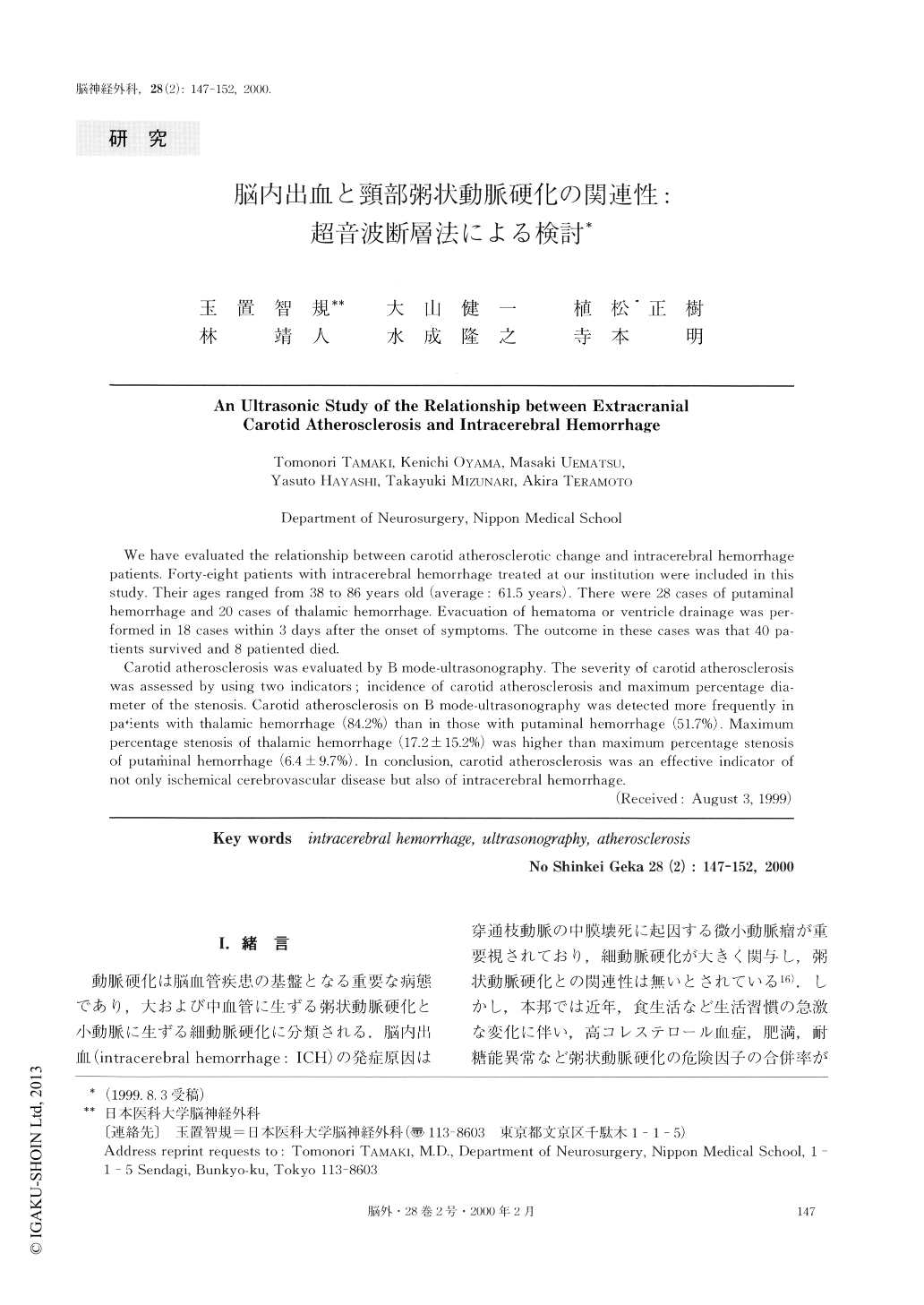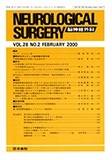Japanese
English
- 有料閲覧
- Abstract 文献概要
- 1ページ目 Look Inside
I.緒言
動脈硬化は脳血管疾患の基盤となる重要な病態であり,大および中血管に生ずる粥状動脈硬化と小動脈に生ずる細動脈硬化に分類される。脳内出血(intracerebral hemorrhage:ICH)の発症原因は穿通枝動脈の中膜壊死に起因する微小動脈瘤が重要視されており,細動脈硬化が大きく関与し,粥状動脈硬化との関連性は無いとされている16).しかし,本邦では近年,食生活など生活習慣の急激な変化に伴い,高コレステロール血症,肥満,耐糖能異常など粥状動脈硬化の危険因子の合併率が上昇し,脳卒中の病態にも影響を与えている.すなわち,脳出血性疾患の減少や脳虚血性疾患の増加,ICHでは致死的ICHの減少,小血腫の増加,脳梗塞では皮質枝梗塞の増加である2,12,13,20).
これら近年の脳卒中病態の変化を鑑みると,細動脈硬化症のみ関連が深いとされるICHにおいても粥状動脈硬化症の合併例は増加し,その病態に影響を与えていることが推察される.今回われわれはICHにおける粥状動脈硬化の影響を再検討するために頸部粥状動脈硬化病変を非侵襲的に評価できるとされる超音波断層法(B-mode法)を用いて検討した19).
We have evaluated the relationship between carotid atherosclerotic change and intracerebral hemorrhage patients. Forty-eight patients with intracerebral hemorrhage treated at our institution were included in this study. Their ages ranged from 38 to 86 years old (average : 61.5 years). There were 28 cases of putaminal hemorrhage and 20 cases of thalamic hemorrhage. Evacuation of hematoma or ventricle drainage was per-formed in 18 cases within 3 days after the onset of symptoms. The outcome in these cases was that 40 pa-tients survived and 8 patiented died.
Carotid atherosclerosis was evaluated by B mode-ultrasonography. The severity of carotid atherosclerosis was assessed by using two indicators ; incidence of carotid atherosclerosis and maximum percentage dia-meter of the stenosis. Carotid atherosclerosis on B mode-ultrasonography was detected more frequently in patients with thalamic hemorrhage (84.2%) than in those with putaminal hemorrhage (51.7%). Maximum percentage stenosis of thalamic hemorrhage (17.2±15.2%) was higher than maximum percentage stenosis of putarhinal hemorrhage (6.4±9.7%). In conclusion, carotid atherosclerosis was an effective indicator of not only ischemical cerebrovascular disease but also of intracerebral hemorrhage.

Copyright © 2000, Igaku-Shoin Ltd. All rights reserved.


